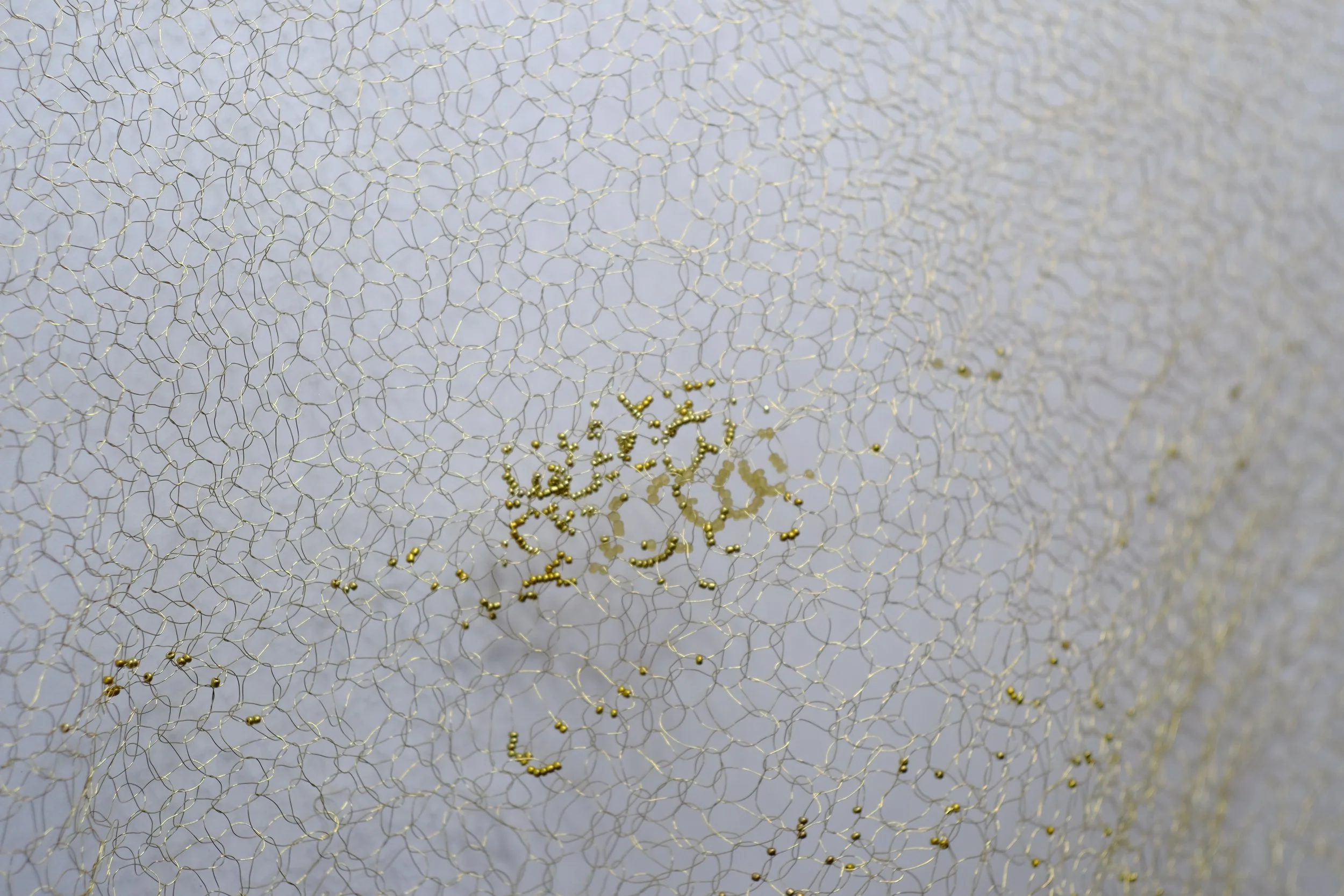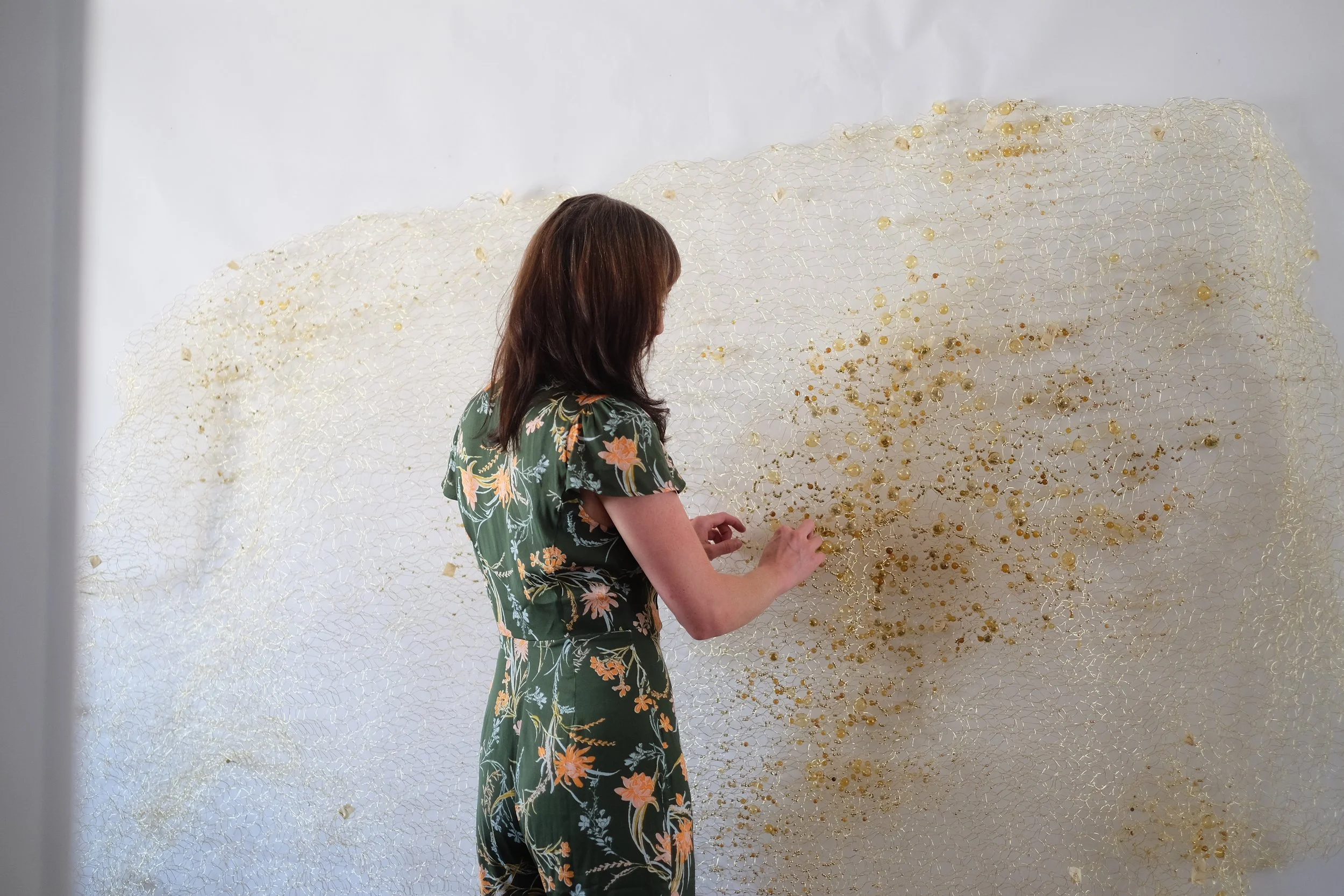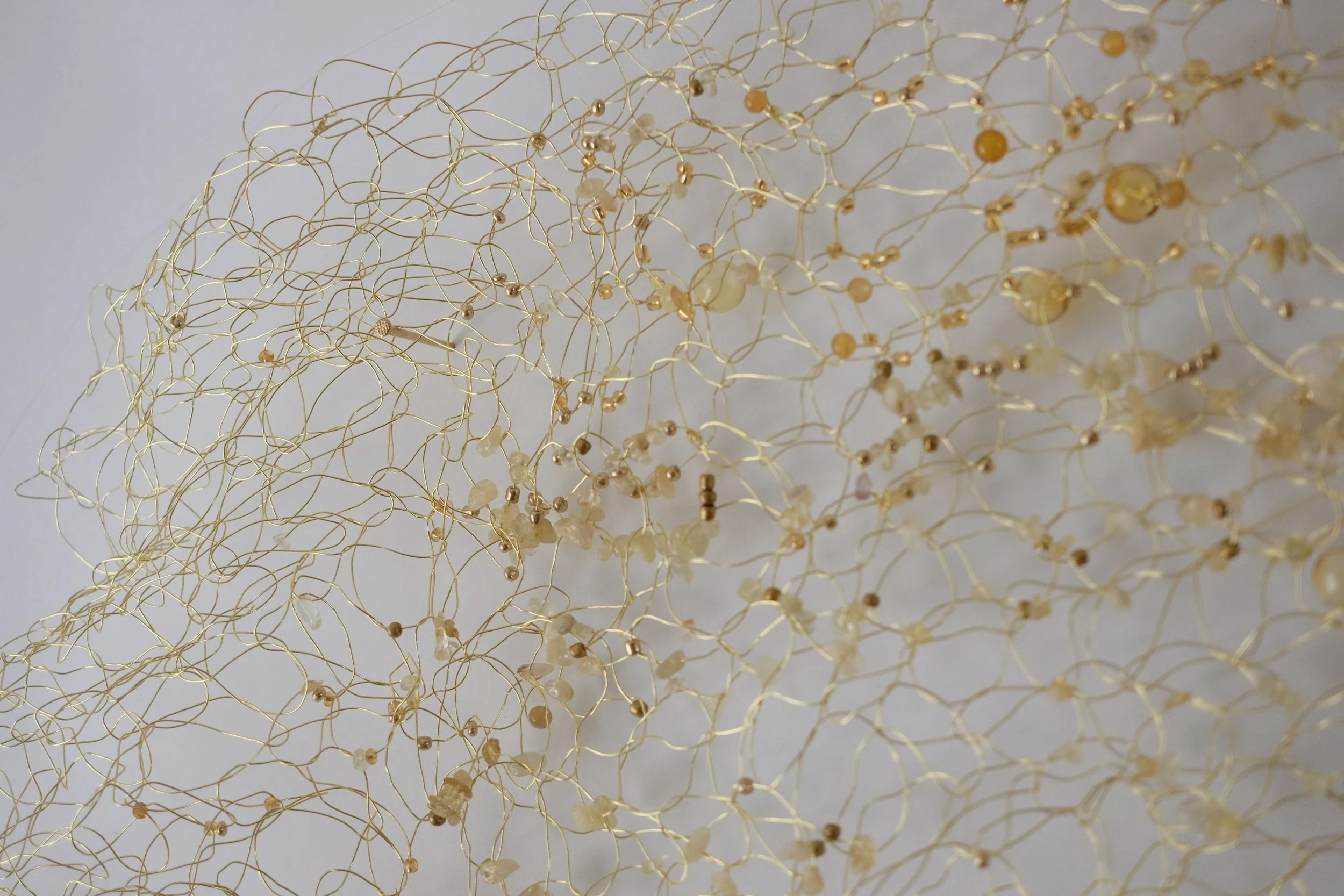The series "Heirloom", uses the practice of weaving to examine what we are leaving for our children with our current environmental practices. Utilizing hand woven metal wire and vessels housing foraged seeds, this collection is visually inspired by jewelry. What we often value and choose to preserve is counter to our survival as a species. In this series I am exploring what I hope to leave for my son. Knowledge about the natural world and a love for it that inspires conservation and reciprocity seems the only true thing of value. Weaving has historically been passed through the maternal line, utilized for practical vital purposes while being cherished for its beauty and delicacy. It is seen through almost every culture throughout history and is one of the traditional practices that continues to be taught. My mom taught me to crochet and sew, and my grandma taught her. I am using a crochet weave in my first piece of this series for this reason. Historically, weaving played a vital role in sustaining families and communities. It had cultural, economic, social, and practical applications in most civilizations. However, weaving is a prime example of the ways in which practices passed primarily through the maternal line are trivialized in our patriarchal society, often labeled as "craft" rather than art or trade. We have been living in a world in which the patriarchy decides what to prioritize. What would happen if we elevated and cherished those traditionally female roles such as foraging and weaving? Seeing natural resources as gifts from the land rather than objects to be hoarded and kept? According to botanist Robin Wall Kimmerer, seeing natural resources as gifts inspires vital reciprocity.
Moss Heirloom was commissioned by City of Hope, and measures 55” x 80”


















